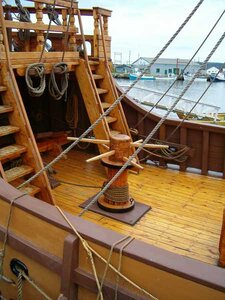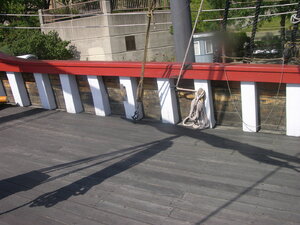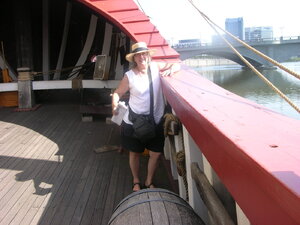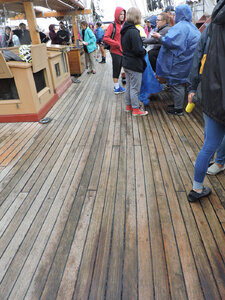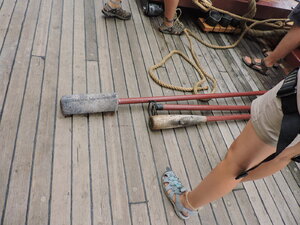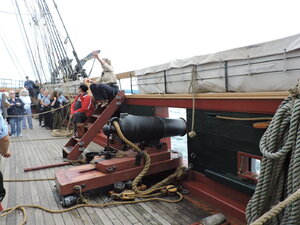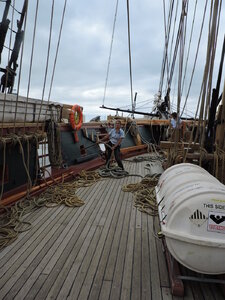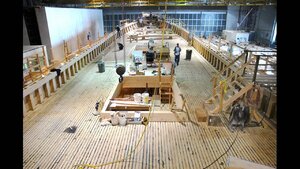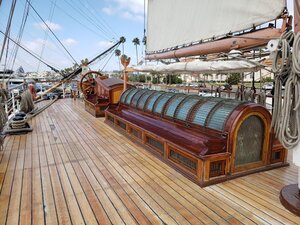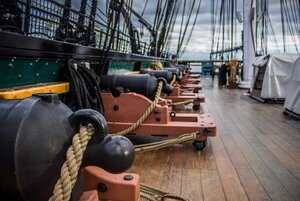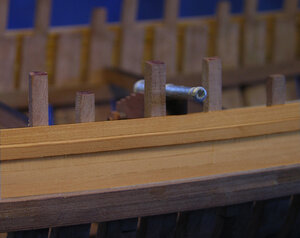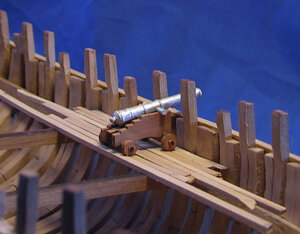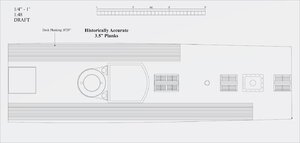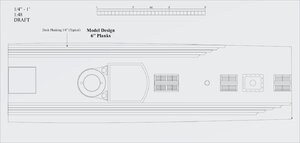- Joined
- Dec 1, 2016
- Messages
- 5,957
- Points
- 728

questions keep coming up about planking a deck so lets do a topic just on that subject.
Many model builders think of deck planks as "planks" when actually they are not they are more like a beam laying down. What we as model builders do on models does not always reflect what was done in actual ship building.
Taken from WOOD a manual for its use as a shipbuilding material and other sources
ship decking in North America for the most part was Southern Yellow pine.
Decking of large craft consisted of comparatively narrow planks that either run parallel to the centerline or are curves to conform to the curvature of the ships sides. curves planks along the outer rim of the deck are called margin pieces.
It is desirable for the cross section of any one plank to be square or nearly so, because with wider planking the effects of swelling and shrinking are concentrated on fewer seams between planks' thereby exerting great stresses on the caulking and fastenings and cause more leaks. Also, square cross sections permit turning the planks to achieve the desired vertical grain on the upper face. Excessive swelling due to the use of planking that is too wide has been known to cause an entire deck to buckle and to rip loose from its beams. Edge grain material is preferred for decking because wood shrinks and swells less across edge grain than across flat grain with changes in moisture content.
The ends of margin pieces, unless curved to fit the ships side, are nibbed into cover board or lock strake and are supported on their underside by small intercostals placed between the deck beams. In some ships a king plank is used at the bow to take the ends of the margin plank. Decks are fastened to their supporting beams by spikes, screws or bolts.
The joints between the various elements of a strake of decking are square butts that land on supporting deck beams. It is customary to cover the heads of all fasteners with wood bungs. Bungs should be made of the same wood as the deck planking; their grain should be parallel to the grain of the planking which they are placed. Caulking of decks are set firmly in place by means of "horsing" with an iron driven into the seam with a heavy beetle "mallet. After the caulking operation is finished, the space between the planks and caulking is filled with a pitch, or seam compound of white lead to prevent the rot of the cotton.
the actual color of deck caulking range from light brown to white to shades of gray and into black.
Many model builders think of deck planks as "planks" when actually they are not they are more like a beam laying down. What we as model builders do on models does not always reflect what was done in actual ship building.
Taken from WOOD a manual for its use as a shipbuilding material and other sources
ship decking in North America for the most part was Southern Yellow pine.
Decking of large craft consisted of comparatively narrow planks that either run parallel to the centerline or are curves to conform to the curvature of the ships sides. curves planks along the outer rim of the deck are called margin pieces.
It is desirable for the cross section of any one plank to be square or nearly so, because with wider planking the effects of swelling and shrinking are concentrated on fewer seams between planks' thereby exerting great stresses on the caulking and fastenings and cause more leaks. Also, square cross sections permit turning the planks to achieve the desired vertical grain on the upper face. Excessive swelling due to the use of planking that is too wide has been known to cause an entire deck to buckle and to rip loose from its beams. Edge grain material is preferred for decking because wood shrinks and swells less across edge grain than across flat grain with changes in moisture content.
The ends of margin pieces, unless curved to fit the ships side, are nibbed into cover board or lock strake and are supported on their underside by small intercostals placed between the deck beams. In some ships a king plank is used at the bow to take the ends of the margin plank. Decks are fastened to their supporting beams by spikes, screws or bolts.
The joints between the various elements of a strake of decking are square butts that land on supporting deck beams. It is customary to cover the heads of all fasteners with wood bungs. Bungs should be made of the same wood as the deck planking; their grain should be parallel to the grain of the planking which they are placed. Caulking of decks are set firmly in place by means of "horsing" with an iron driven into the seam with a heavy beetle "mallet. After the caulking operation is finished, the space between the planks and caulking is filled with a pitch, or seam compound of white lead to prevent the rot of the cotton.
the actual color of deck caulking range from light brown to white to shades of gray and into black.

